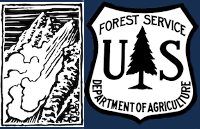This is Alex Marienthal with the avalanche forecast for Sunday, February 9th, at 7:00 a.m. sponsored by Klim and World Boards. This forecast does not apply to operating ski areas.
Yesterday snowfall dropped 1-3” near Cooke City, West Yellowstone and Island Park with none elsewhere. This morning temperatures are zero to single digits F. Wind has been out of the west, northwest and southwest at 10-25 mph with gusts of 25-40 mph.
Today, skies will be mostly cloudy with light snow showers, temperatures will reach single digits to teens F, and wind will be light at 10-15 mph with moderate gusts to 25 mph. By morning 1-3” of new snow is possible near Bozeman, Big Sky and Cooke City with a trace to 1” elsewhere.
All Regions
Human-triggered avalanches are likely, especially where snow that fell over the last week is drifted into thicker slabs. Avalanches could break within the recent snow or on persistent weak layers buried 1-3 feet deep below the last week’s snow.
Wind slab avalanches will be easy to trigger where recent snow has been drifted by west and south winds into thicker slabs.
Persistent slab avalanches are a primary concern as they could break hundreds of feet wide and 1-3 feet deep, or deeper on wind-loaded slopes. Weak, sugary layers of facets and surface hoar are buried 1-3 feet deep below the last week’s snow. These weak layers appear to be most widespread near West Yellowstone and the southern Madison and Gallatin ranges, but have been found elsewhere (Mt. Ellis observation). You should keep them in mind and be on the lookout no matter where you travel in the forecast area. Yesterday we rode north of Cooke City and did not see clear evidence that these weak layers are a widespread concern, but the snowpack needs more time to adjust to all the recent snow before we have confidence to rule out the potential for larger slides (observation).
Storm slab avalanches can break on density changes within the recent snow. These instabilities should stabilize within a couple days, but the cold temperatures could slow that process. We have had reports of avalanches breaking within the new snow throughout the week (photo from Cooke City yesterday, Bridgers observation, Hyalite observation). Yesterday near Cooke City we found lower density layers of recent snow preserved below harder slabs. Be aware that avalanches could break within the recent snow even where it is not drifted (video).
At lower elevations around the valleys snow depths are notably deep, particularly on some steep slopes that don’t often hold much snow. Yesterday Dave noted this abundance of snow in Sourdough canyon, and he wrote a great observation with avalanche concerns and travel advice to keep in mind for these areas that don’t typically have as much snow and avalanche potential.
Cautious route-finding and careful snowpack evaluation are essential today. Either avoid slopes steeper than 30 degrees or evaluate the snowpack for recent drifting and buried weak layers before getting onto those steeper slopes. Watch for cracking across the snow surface as a sign the recent snow or wind drifts could avalanche on steeper slopes. Dig down a few feet to assess for buried weak layers. Choose smaller slopes to minimize the size of potential avalanches, and slopes without hazards like trees or cliffs that make any size slide more dangerous.
The avalanche danger is CONSIDERABLE.
Upcoming Avalanche Education and Events
Our education calendar is full of awareness lectures and field courses. Check it out: Events and Education Calendar
February 20, 4-7 p.m. Beacon BBQ at Uphill Pursuits in Bozeman. Come try out different brands of avalanche transceivers (or practice with your own!) with coaching from Friends of GNFAC instructors and free hotdogs.
Every weekend in Cooke City: Friday at The Antlers at 7 p.m., Free Avalanche Awareness and Current Conditions talk, and Saturday from 10 a.m.-2 p.m. at Round Lake Warming Hut, Free Rescue Practice.

